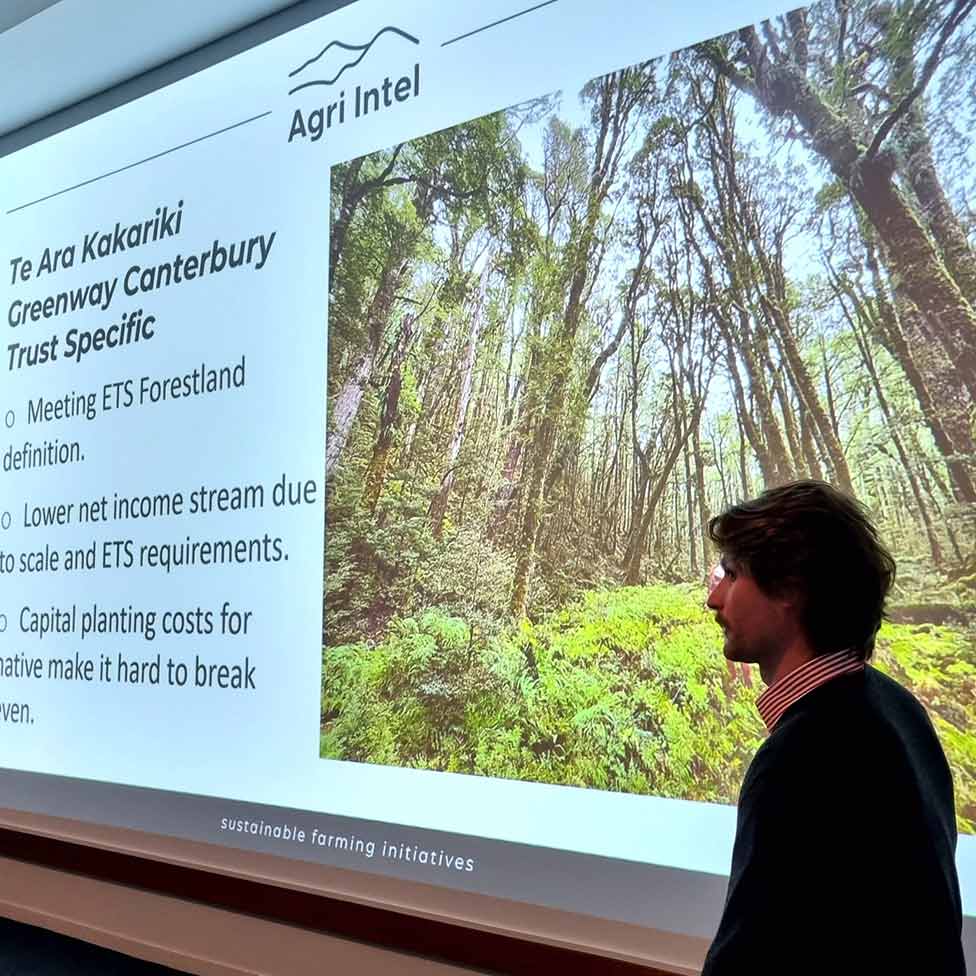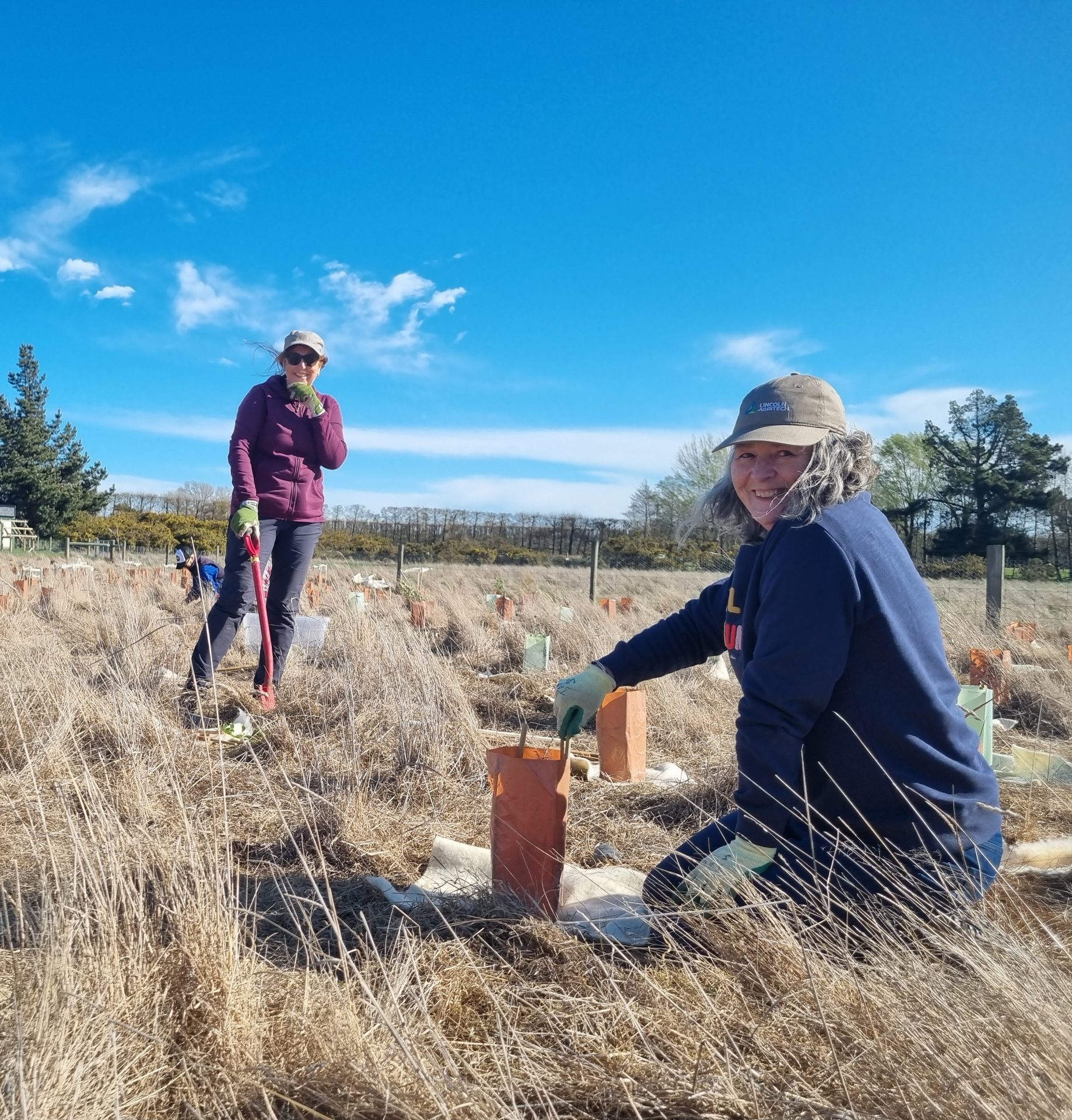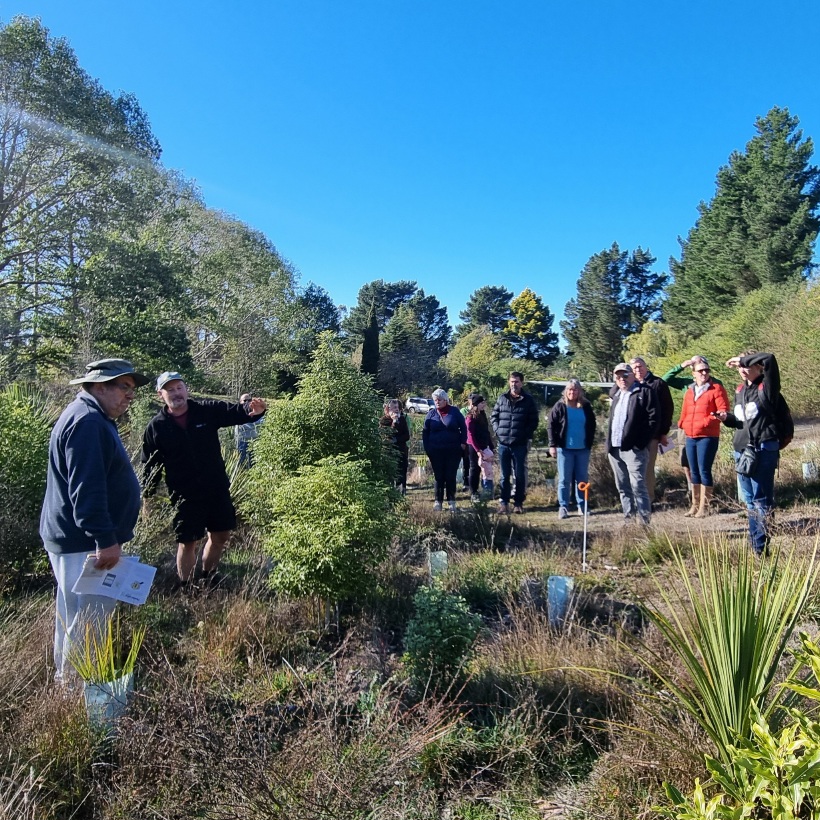Over 70 people turned out for the annual Friends of Te Ara Kākāriki meeting held on Tuesday evening at Lincoln University. Together with long-term supporters, landowners, volunteers, and newer faces, Ian Spellerberg and Frances Schmechel were also in the audience. As two of the trust’s original members, they founded it alongside others in 2005 and Ian is now Patron of Te Ara Kākāriki.
Co-Chair Craig Pauling opened the evening, reflecting on our progress planting a series of native Greendots to link Kākāpōtahi the Canterbury foothills to Te Waihora Lake Ellesmere. What began as a crazy idea trying to build on the dwindling 0.5% of indigenous vegetation that remained in Canterbury has now grown significantly with 132 Greendots spread across Selwyn covering 43 hectares. Receiving Jobs for Nature funding in 2021 enabled the employment of field workers to plant and maintain specific sites, resulting in the trust doubling its planting efforts. In 2022 this led to 43,298 native seedlings being planted by volunteers, students and field workers.
Next it was over to guest speaker for the evening Sam Mander, who is one of the managing directors of Agri Intel. He was welcomed by an audience curious to learn whether landowners can register their young native plantings in the Emissions Trading Scheme (ETS) and if it would be profitable.
There are significant opportunities for landowners with naturally regenerating bush but also with sites like those Te Ara Kākāriki landowners are creating. While the system has been set up with exotic species and naturally regenerating bush in mind, newly planted native forests are catered to, and data is being updated regularly so true carbon capture can be calculated.
To become accredited for the ETS, sites must meet criteria such as being at least 1 hectare in size, having 30% canopy cover when mature, contain a certain number of trees that will reach at least five metres in height, and be at least 30 metres wide on average. Just a year after planting, landowners can begin receiving yearly credits. The market fluctuates but landowners can choose to sell when they are ready. Agri Intel use drones to record canopy cover and species and calculate how many tonnes will be sequestered from the site. From there MPI assess the data provided and give accreditation.
For Te Ara Kākāriki landowner plantings, it was recommended to consider the layout of plants when planting a Greendot as a variety of species are planted to replicate a natural forest but not all these will meet the ETS criteria. For older plantings there is potential to interplant the right species to meet the requirements.
There was much discussion on whether returns were worthwhile, but the conclusion was that Te Ara Kākāriki are already planting for biodiversity reasons, so if landowners can benefit from the ETS then it is a great extra bonus. Perhaps in the future landowner properties can be carbon neutral or returns could fund additional planting.





